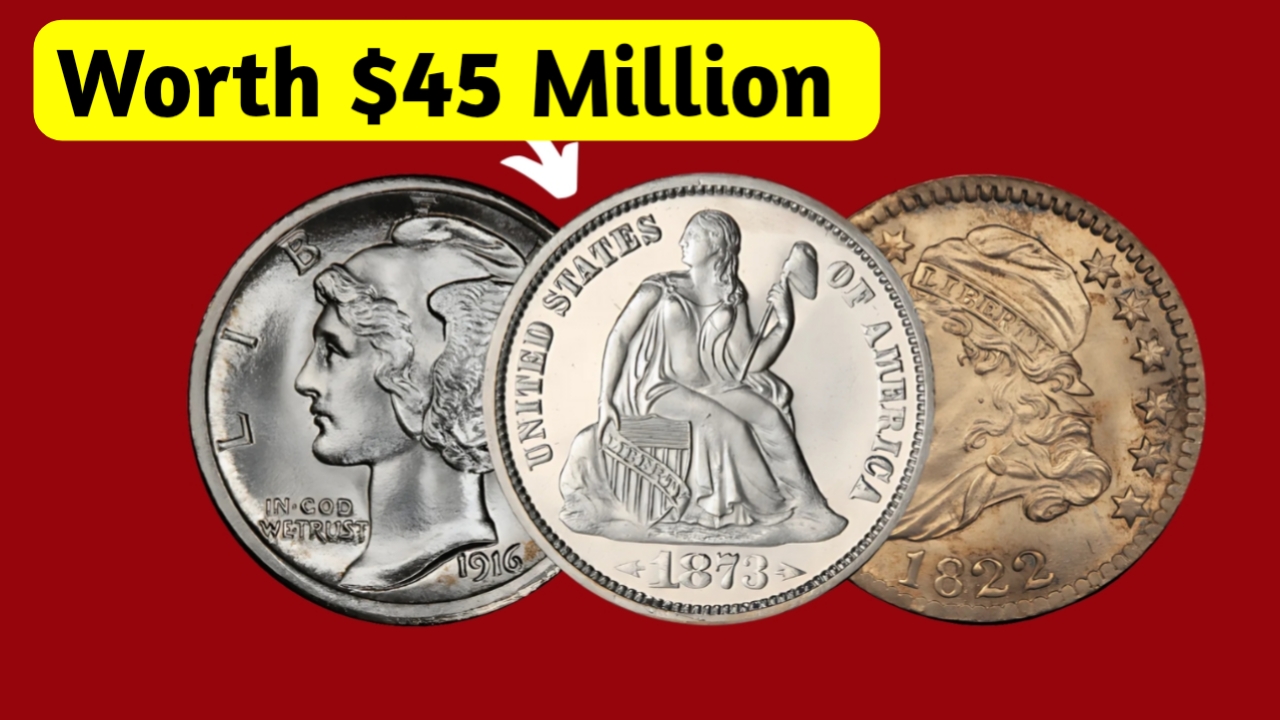Rare Bicentennial Quarter Worth $45 Million – Check Your Coins Now!
You’ve probably heard the sound of coins rattling in your pockets or tucked away in forgotten jars. But what if one of those seemingly ordinary coins—a rare 1976 Bicentennial Quarter—was actually worth an unbelievable $45 million? It might sound like a myth, but numismatists and collectors alike have long revered certain special editions of the Bicentennial quarter. And one particular coin has become a near-legend for its rarity and eye-popping value.
Let’s explore what makes this coin so unique, how to identify one, and what steps to take if you think you’ve stumbled upon a hidden treasure.
What Is a Bicentennial Quarter?
The Bicentennial Quarter was released in 1976 to mark the 200th anniversary of American independence (1776–1976). Instead of the standard eagle design on the back, it features a colonial drummer boy—making it visually distinct and easy to spot.
The U.S. Mint struck over 1.6 billion of these coins across Philadelphia, Denver, and San Francisco. While most were made for everyday use, a limited number—including those with minting mistakes or struck in special materials—have become rare and highly valuable collector’s items.
Why Is This One Bicentennial Quarter Worth $45 Million?
This isn’t just any quarter—it’s one of the rarest ever made. Here’s why it commands such an astronomical price:
-
Minting Error or Production Flaw: Coins with errors such as double strikes, misalignments, or being off-center are especially prized by collectors.
-
Rare Metal Composition: While most quarters from 1976 were made from copper-nickel, a tiny batch was accidentally minted in 40% silver, reserved for special collectors’ sets and never meant for circulation.
-
Perfect Condition: This particular coin is believed to be in mint state (MS-70), meaning it has absolutely no wear or damage—a near-impossible find for coins of this age.
-
Historical Backstory: Coins with unique provenance—such as those once owned by famous collectors or tied to historic events—often fetch higher prices.
-
Unmatched Rarity: Experts think this coin is one-of-a-kind due to its mix of mint error and rare silver content, making it a true unicorn in the numismatic world.
How Can You Tell If You Have a Valuable Bicentennial Quarter?
While most Bicentennial quarters are worth just 25 cents, a few may be worth thousands—or even millions. Here’s what to look out for:
1. Mint Mark Location
Look under Washington’s ponytail on the front of the coin:
-
“D” means it was minted in Denver
-
“S” is for San Francisco (proof coins)
-
No letter = Philadelphia Mint
San Francisco (“S”) mint coins—especially silver proofs—tend to be more valuable.
2. Material Check
Use a precise coin scale or seek expert testing to see if your quarter contains 40% silver instead of the standard copper-nickel.
3. Date and Design Details
Ensure the back shows the colonial drummer and the dual year “1776–1976.” Look closely for double lettering, unusual patterns, or off-center printing.
4. Condition
Coins that are uncirculated or professionally graded MS-65 and above can sell for significantly more—even if they don’t have errors.
Other Valuable Bicentennial Quarters Worth Big Money
Even if you don’t have the elusive $45 million coin, there are still other Bicentennial quarters fetching serious money. Here are a few standouts:
| Type | Estimated Value |
|---|---|
| 1976-S Silver Proof | $15 – $500+ |
| 1976-D Double Die Obverse | $500 – $3,000 |
| 1976-S Clad Proof (Deep Cameo) | $50 – $200 |
| 1976-S Silver MS-69 | $1,000 – $5,000 |
| Various Minting Errors | $100 – $5,000+ |
Where Should You Sell a Rare Bicentennial Quarter?
Think you might have one of these high-value coins? Don’t spend it or bring it to a regular bank. Here’s what you should do:
-
Have It Graded: Send your coin to a professional grading company like PCGS or NGC for verification and official certification.
-
Consult an Expert: Visit a reputable coin shop or talk to collectors on numismatic forums to get trusted opinions.
-
Use a Major Auction House: Rare coins should be sold through top auction platforms like Heritage Auctions or Stack’s Bowers.
-
Try Online Marketplaces: Platforms like eBay, Etsy, or specialized coin sites can work—but make sure you understand the market and buyer protections.
Why Are People Paying Millions for Rare Coins?
It’s not just about the metal—it’s about the story, the rarity, and the bragging rights. Collectors are drawn to coins because they represent tangible pieces of history. The Bicentennial quarter, in particular, holds patriotic value, being tied to America’s 200th birthday and released with a one-time-only design.
As interest in numismatics grows and more people begin searching their coins for hidden gems, the demand for rare, error-filled, or silver-content quarters continues to rise—especially those in pristine condition.
Is There a Chance You Already Own One?
You might. That dusty jar of coins, inherited collection, or random change from the store could contain something far more valuable than you think. While finding the exact $45 million quarter is extremely rare, others can still bring in hundreds or thousands. It’s definitely worth checking what’s in your stash.
Final Thoughts
The incredible story of the $45 million Bicentennial Quarter proves that priceless treasures can be hiding in the most unexpected places. Whether you’re a seasoned collector or just curious, don’t overlook those old coins—one of them could be the key to a financial windfall.
FAQs
What is a Bicentennial Quarter?
It’s a 25-cent coin issued in 1976 with a special colonial drummer design, marking 200 years of U.S. independence.
Why is this coin so rare?
Because of factors like mint errors, silver content, and exceptional condition. Only one like it is known to exist.
Where is the mint mark located?
Look at the front of the coin, near Washington’s ponytail—it will show a letter like “D,” “S,” or none at all.




